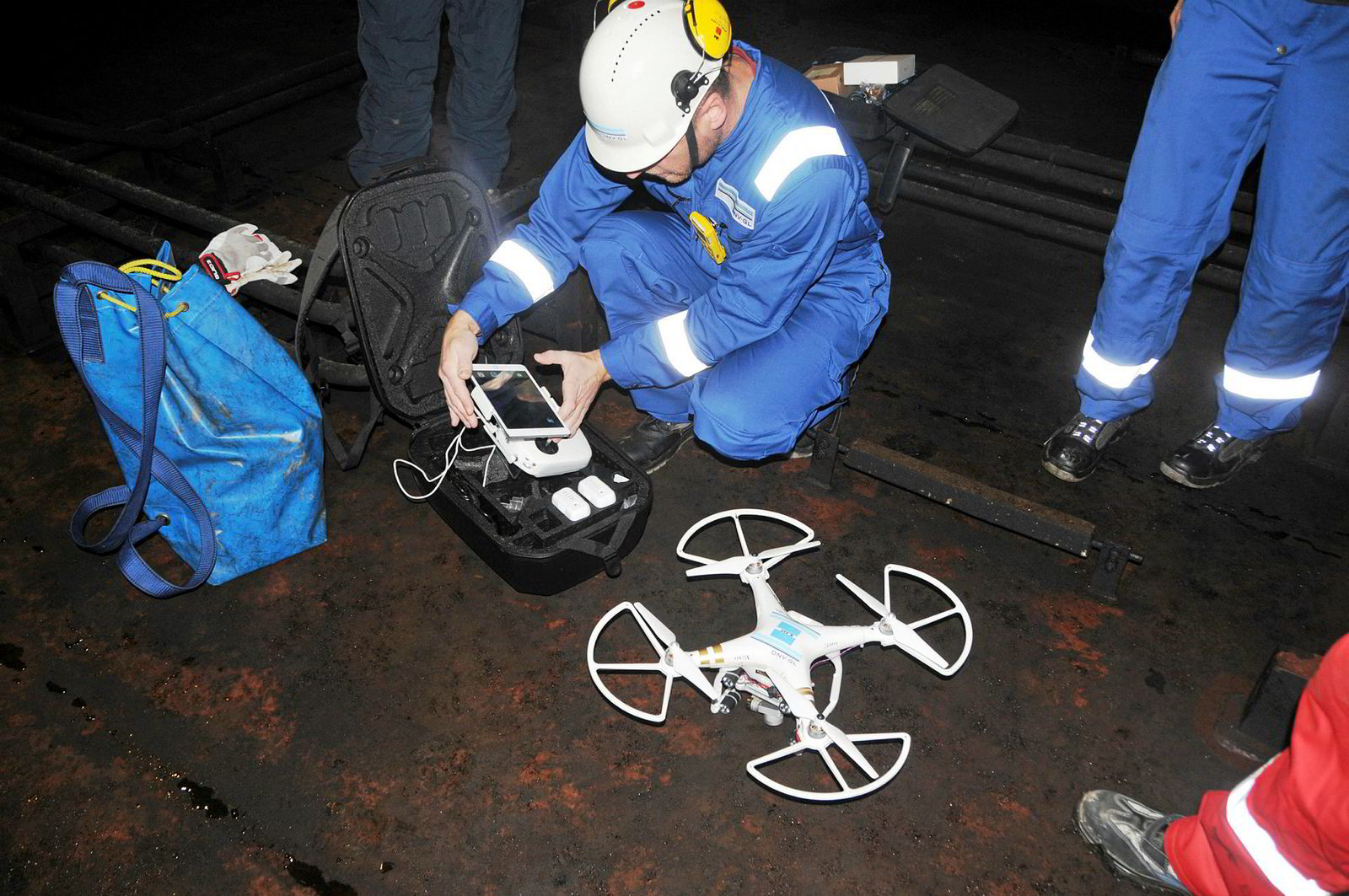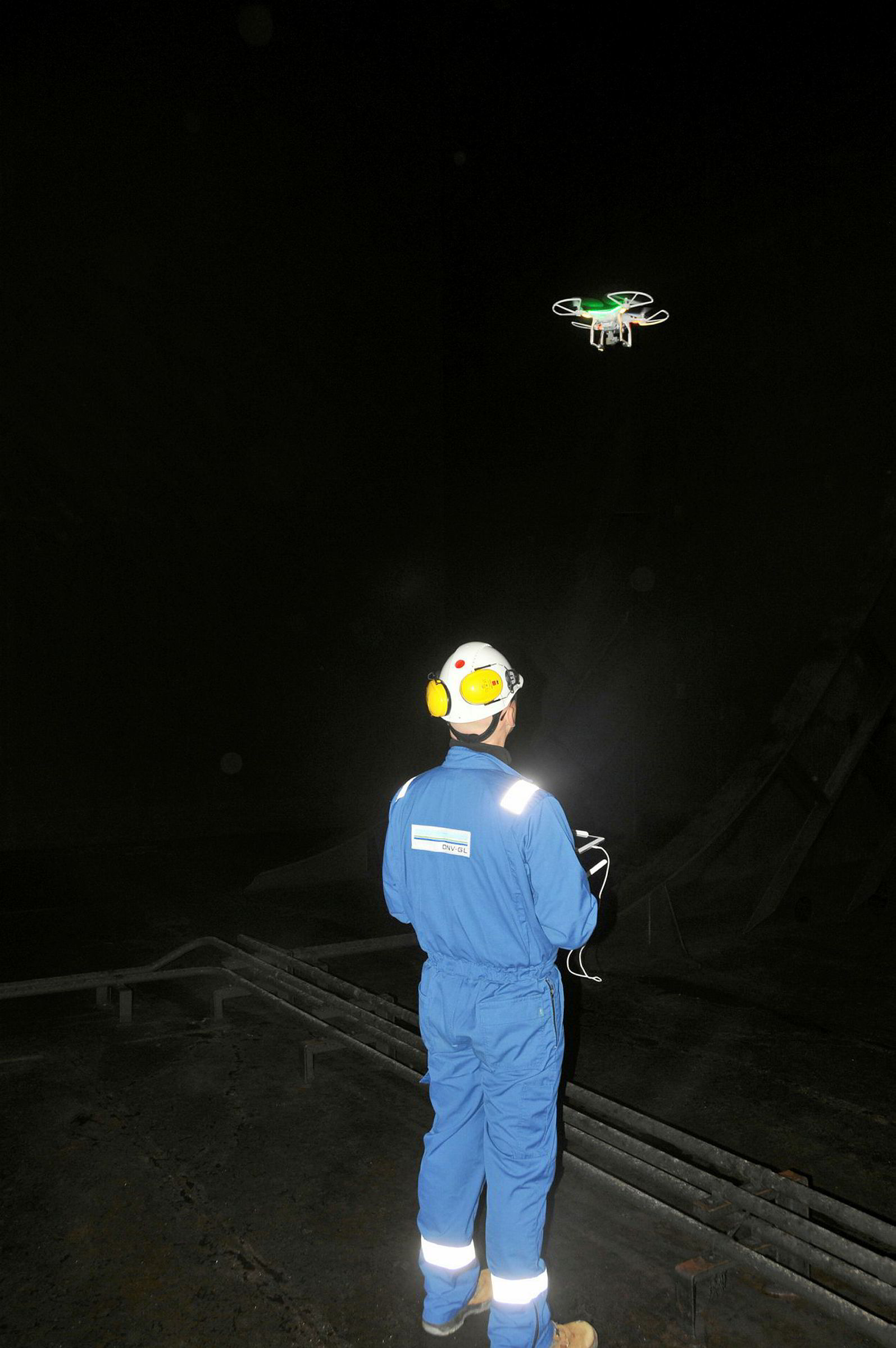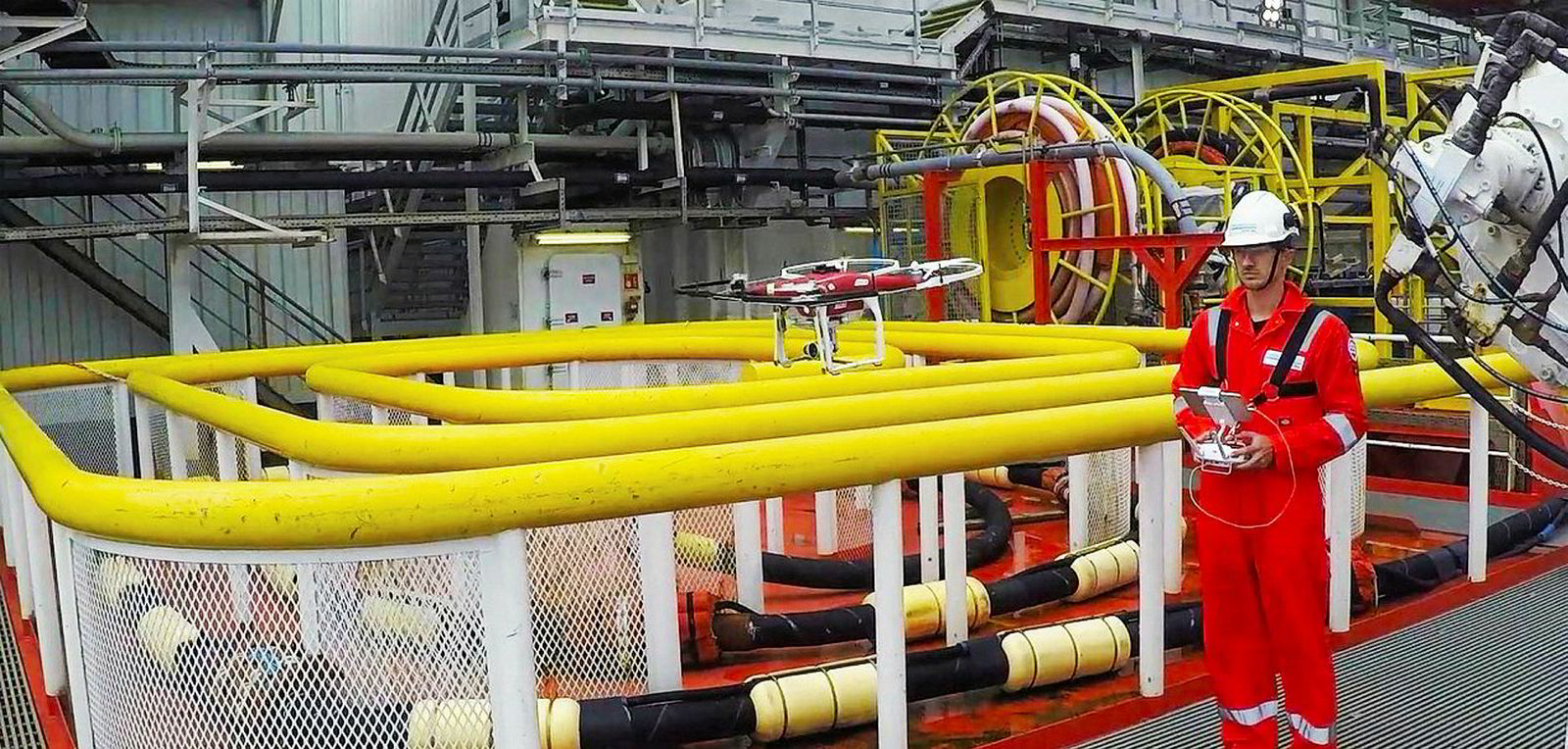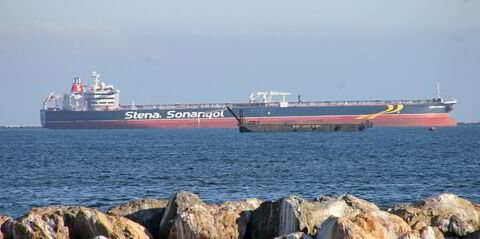DNV GL’s use of a $2,000 inspection drone has prevented downtime on offshore services worth at least several million dollars to Statoil.
The reason is that the classification society’s first drone survey carried out at sea, involving a Prosafe’s tender support vessel (TSV), was completed in hours rather than days.
Direct savings are also being registered for DNV GL clients in commercial shipping.
One large benefit of remote inspection is the increased safety that arises from keeping surveyors well and truly out of harm’s way. However, the time saving for Statoil is no small matter, given the huge daily expenses on offshore projects.
The TSV’s rate was estimated at $389,000 per day when the contract was announced in 2014, which would make two days of delay worth $778,000.
But this amount excludes Statoil’s expenses for personnel and other drilling services at the North Sea’s Oseberg field, which normally would have been affected by the inspection.
“We are very pleased that we chose to try the drone survey, as it helped us optimise our survey requirements and allowed us to save significant amounts of time and money,” Prosafe Offshore chief operating officer Ian Young said.
“Normally, this kind of operation would cause disruption to our client for several days. The drone survey took only a few hours and was just as effective.”
DNV GL surveyors carried out the remote inspection of Oslo-listed Prosafe’s 25,383-gross-ton Safe Scandinavia built (1984), which was extensively upgraded in 2003, 2005 and 2014. The last big investment was in 2015 during its conversion into a tender vessel for the Statoil contract, which is running from March 2016 to July 2018. Prosafe designates the TSV as a “vessel”, although most observers would recognise it as a semi-submersible.
‘Great opportunity’
“This was a great opportunity for us to demonstrate our drones’ abilities to check the condition of remote external components in challenging offshore conditions,” said DNV GL project manager Cezary Galinski, who leads the “flying squad” based in the Polish port of Gdynia.
“The inspection only required the semi-submersible to de-ballast, then we flew the drone approximately 25 metres below the main deck to check the condition of the fairleads and their connections to the columns that hold up the TSV. With wind speeds of approximately 15 knots, this went very well.”
DNV GL head of media Nikos Spath says the class society’s inspectors have made 18 production surveys so far with data gathered by drones and has conducted many more test surveys on commercial ships and offshore vessels.
The DNV GL “flying squad” has also expanded, with 15 certified drone pilots now based in Gdynia, Piraeus, Singapore, Houston and Shanghai.
One of the largest benefit of the drones for Statoil is perhaps not direct savings but lies principally in the reduction of delays in services because of the other high-value contracts at the field along with the TSV’s contract. However, the direct savings to owners in commercial shipping are by nature smaller than in offshore drilling but readily apparent.
For example, a vessel’s cavernous cargo tanks must be inspected from top to bottom but access is no easy matter, given the height of the space.
Scaffolding can be built from the bottom of the tank or suspended from the ceiling to allow access for surveyors.
Another common method of inspection is a process called “rafting”. Water is pumped into a vessel’s cargo tanks to various levels, while a surveyor sits in an inflatable raft to inspect the walls and ceiling.
Both methods require the shipowner to cover the expense of a lengthy yard visit. Rafting includes the cost of pumping huge volumes of water in and out.
If an inspection is done at sea, the use of drones removes the shipyard cost and eliminates the possibility of scaffolding damaging interior tank coatings.
In 2016, DNV GL’s first-ever production survey used drones on Carl Buttner Shipmanagement’s 24,000-dwt chemical tanker Apollo (built 2003). Drones allowed surveyors to inspect 14 tanks in about 60 hours, which could have taken an additional 72 hours using the normal procedure. Carl Buttner estimates that its direct savings came to between €14,000 and €28,000 ($16,510 to $33,000).
Apart from time and money, remote inspections with drones keep surveyors safer than when they have to climb around a ship’s interior spaces.
In the case of the Safe Scandinavia, DNV GL used a Phantom drone, which is made by Chinese technology company DJI and retails in Europe for about $2,000.
DNV GL is modifying commercial drones and is also developing its own custom-made models, says Spath. Modifications include improvements to the flight-control software, better lighting and strengthening the units to protect against hitting ships’ internal structures or surfaces.
Standard drones generally have cameras that point forward and down, while DNV GL’s modifications allow them to point upwards.
Spath says one eventual goal is to develop a drone small enough to fit in a surveyor’s pocket. Another idea is to allow drones to be able to measure the thickness of steel, to check steel wastage on ships.






